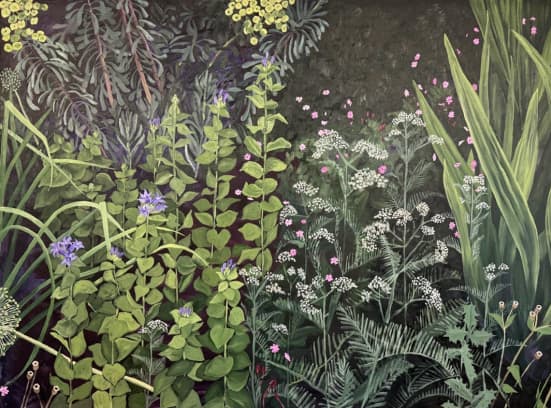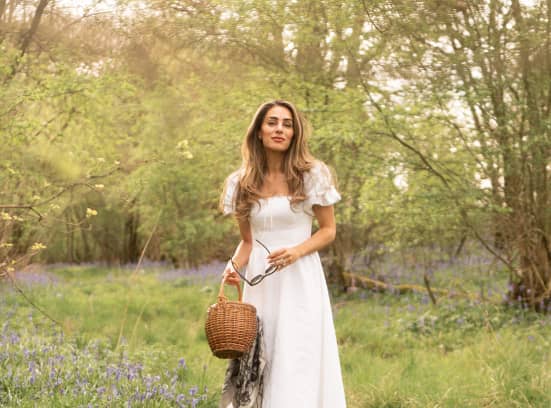The Arctic, in many people’s eyes, conjures up images of winter darkness, the Midnight Sun in summer, desolate expanses of snow and ice, and a rich and varied flora and fauna. It is perhaps epitomised most of all by the polar bear. However, this view is only a partial representation of the character of the Arctic, which ranges from ice-covered mountain ranges to vast, monotonous swampy plains of shrubby vegetation that are breeding grounds for ghastly mosquitoes.
Offshore, the ocean, the habitat of many rare animal species, remains ice-covered for much of the year. Sadly, some parts of this pristine wilderness have been degraded by Western civilisation through mineral exploitation, hunting and the activities of the super-powers during the Cold War years. Yet, despite these activities, very large areas of the Arctic, and especially the islands, remain in their pristine state.
Lying little over 40 km (24 miles) off the north coast of Iceland, and straddling the Arctic Circle, the tiny island of Grímsey is a green, grassy and particularly agreeable island, standing alone far out on the horizon, a seemingly blue anvil of rock, surrounded by the inhospitable Arctic Ocean.
Grímsey is home to little more than one hundred people (and a million seabirds) and is an utterly pure and separate world from the rest of Iceland. As the country’s remotest (inhabited) offshore island, Grímsey grants the traveller the gift of isolation and windswept beauty. On one side, a mighty wall of basalt cliffs stands sentinel against the open sea – from these great heights the island descends in a slope of green tussock-strewn fields to the opposite shore with its low-lying coves and small harbour.
According to Norse legend, the island was first settled in the summer of 1024 by the indefatigable Viking, Vestfjarða-Grímur Sigurðsson, and named after him (Grímsey meaning ‘Grímur’s Island’). Its abundant resources of fish, birds and their eggs were widely renowned. Today, the island supports only one tiny settlement, Sandvík, which is located alongside the harbour on the southwest coast – a relatively prosperous, happy and fertile community with many children.
Heimskringla, which is perhaps the best known of the Old Norse king’s sagas, states how King Ólafur of Norway asked for the island as a gift in exchange for his friendship, but the Icelanders rejected the idea as Grímsey was a valuable resource of food, and the king would have probably stationed an army there. In the late 18th century it seemed that the community’s fate was to die out, since most of the men expired from pneumonia or accidents at sea. However, the community has endured to this day, even though the population has lessened a little.
For centuries there were ten agricultural holdings on Grímsey, but little by little more houses were built on the land of the old crofts and a small village was born above the cove at Sandvík. All the dwellings on Grímsey have names which are used in everyday speech.
The people of Grímsey were, through the ages, engaged in sustainable farming, living off the fruits of land and sea. On most crofts, there was a small homestead as well as a few animals. In 1883, Grímsey became an authorised trading post. The islanders ordered goods and had those sent to them by the Örum and Wulff store in Húsavik. After 1918, new stores owned by the islanders began to spring up, selling everything from Eider down to salted herring, which marked the end of the old system of trading by order. The Eyjafjörður Cooperative Society ran a store on Grímsey from 1929 to 2000; this is now owned by the islanders themselves.
In the late 19th century the people of Grímsey were known for their prowess in chess. An American chess champion Daniel Willard Fiske, who was also a leading scholar on all things Icelandic, left the islanders $12,000 upon his death and gave instruction for a school and library to be built, and also presented them with eleven marble chess sets, the last of which can still be seen, alongside Fiske’s portrait, in the library inside Múli, the island community centre, which stands on the original site of the school he financed. Sadly, hardly anyone plays chess on the island today.
The island is pleasantly small (5.3 km or two square miles), much like a punctuation mark for the whole of Iceland. Besides the handful of resolute islanders and millions of seabirds, there are only rocks, grass, the wind and the sea. Yet, despite their isolation, the islanders are admirably content with their lot and manage to eke out a living from the rich bounty of nature that encompasses them.
There’s just one road on Grímsey, which runs the length of the west coast from the lighthouse at its southernmost point, Flesjar, through the village to the small airport at Básar – a total length of 3 km
(1.86 miles). Landing here in one of the light aircraft that link the island with Akureyri on the north coast of Iceland can be quite an experience, as planes are often forced to buzz over the runway on the initial approach to clear the hundreds of potentially dangerous birds that gather on it before coming in a second time to land.
The fishermen of Grímsey harvest the rich fishing banks all around the island but often venture in their small motorboats much further north into the deeper waters of the Arctic Ocean. It’s an endless expanse which often turns wild, with unforgiving storms and frost, and mountainous waves over 15m high.
Though fishing has long been the mainstay of life on Grímsey, for many years it did not enjoy the benefit of a natural harbour; there were only a few landing places on the shore, which made seagoing a risky pursuit. Up until around 1900 fishing was conducted from small rowing boats, as the lack of harbour facilities made the use of larger craft much harder. In 1935 the first pier was built at Sandvík and in 1990 the robust inner harbour was completed and taken into service. Now there are several fishing companies on Grímsey, marketing both salted and fresh fish.
Because of the island’s geographical position, the number of daylight hours differs greatly from season to season. On the shortest day of the year, daylight lasts for two hours and 15 minutes while, for a month in summer, the sun never sets and it is bright right around the clock, which I have always found rather disturbing when visiting these latitudes.
Other times, the polar ice may drift from the north and keep the ocean frozen all around the island, while in the summer months, the same ocean may be a shining mirror, with clear blue skies, and unbroken views south to Iceland, where the jagged line of greyish mountains that stretch from Skagafjörður to Melrakkaslétta dominate the far-distant horizon.
The chorus of seabirds never stops during the 24-hour long day – there is no night on Grímsey during the summer, not until late July when twilight begins to descend on the island around midnight. The majority of the birds nest on the high cliffs on the east coast, which rise to around 100 m (325 feet) in places, but these sea cliffs are relatively low compared to the towering Látrabjarg cliffs on the west coast of Iceland, which rise to a staggering height of 441m (1,447 feet) at their highest point, and host the country’s greatest concentration of seabirds.
The bird life on Grímsey is unique, with no less than 36 bird species breeding on the island, which flourish here for several different reasons; the rich fishing grounds, the absence of rats and mice, and the manner in which the islanders seem to live in perfect harmony with their avian friends, much as they have for centuries.
Grímsey is one of the best places in Iceland for watching cliff nesting birds such as the Kittiwake, Northern Fulmar, Atlantic Puffin, Manx Shearwater, Razorbill, Common Guillemot, Black Guillemot, Brünnich’s Guillemot, Storm Petrel, Little Auk, most species of gull and the occasional Raven and Peregrine Falcon, who can often be seen patrolling the cliffs in search of prey. Grímsey also supports one of Iceland’s largest Arctic Tern, or ‘kría’ nesting sites, the majority of which nest alongside the runway and will dive-bomb you acrobatically if you venture too near.
Other birds commonly seen on the island in the summer include the Snow Bunting, Wheatear, White Wagtail, Red-necked Phalarope, Great Skua and Common Eider duck, which make their down field nests in the tussock grass all over the island.
Every spring, shortly after the guillemots arrive on their nesting ledges, it has been a tradition on the island to harvest the first egg of the season, which the islanders have been doing for centuries as a means of supplementing their diet.
Contrary to popular belief, the collecting of these eggs in no way harms or threatens the breeding population of guillemots on Grímsey, or indeed other Nordic countries, such as Svalbard, Greenland and the Faroe Islands, where the practice is commonplace and their numbers are actually increasing.
The guillemot will usually lay a single, brightly-coloured, pear-shaped egg on the bare rock. The islanders start collecting the eggs on or around the 10 May, enabling the bird to lay a replacement egg which will then be left to hatch, thus ensuring they are not affecting the breeding cycle or resident population.
It was recently my good fortune to be invited to join a group of climbers on the cliffs of Grímsey, in what was an undeniably amazing experience, if not a trifle scary. Given the height of these cliffs, you must always wear a helmet, a safety harness and a climbing suit for protection. There is the rope, of course, and a tractor is required for letting the climber down and pulling him back up the cliff.
In the past they used to do this without the use of a tractor and a rope, by climbing up the cliff face from a boat, or being lowered down the cliff tethered to the end of a long rope, which was guarded by six or seven strong men on the top, but too many men lost their lives this way, usually due to a falling rock or a broken rope.
After making our way to the cliffs on the east coast of the island, Siggi Henningsson, who by trade is a Grímsey fisherman, demonstrated how it was done. He does not flinch as he hops over the side of the cliff with a collecting bag, waving goodbye to his family, and descending to collect his bounty of eggs. It’s something he has been doing since he was a small boy. It is dangerous work, but it’s just another afternoon well spent for Siggi, who collects hundreds of eggs each season which he then delivers to a collective refrigerator in the centre of town for anyone to eat when they have a craving to do so, with maybe 20-30 surplus eggs he sells to the one restaurant on the island.
Upon his return to the cliff top, Siggi helped me to don my harness, fastened me to the rope, and I was gently lowered down. I felt a little uneasy at first, but down I went, landing on a rather wide ledge with the cliff towering above me and the sea pounding on the rocks below. Soon, more men joined me and off we went gathering eggs, which were lying in great numbers on the barren rock. All we had to do was pick them up and put them in the bags, but it was hazardous work, for the ledge was extremely slippery from wet bird droppings and sea slime. Slipping, I knew, could easily mean falling headlong into the swirling breakers beating at the cliff.
I had sweated profusely during the climb and was certainly pleased to be back on firm ground again, where I was sure of my footing. Nevertheless, I soon managed to regain my composure, in which I was greatly assisted through the consumption of some raw eggs drunk straight from their shells. They were great in taste and marvellously complimented the rugged surroundings, the fresh wind blowing in my hair, and the continuous and spectacular symphony of the breaking seas and the shrieking seabirds fluttering in the air.
Not all the eggs are for eating, for there is one artistic young lady on Grímsey who has the creative ability to turn nature’s miracle of packaging into beautiful works of art. Her name is Mayflor Perez Cajes and she was born in the Philippines in 1983, moving to Iceland with her family when she was eight-years-old.
When Mayflor first visited Grímsey she fell in love with the island, its nature and a young fisherman called Henning, and decided to move there in 2009, where she soon started a family and set up a small company called Grímsey Design. She uses the empty eggshells of both the Common and Brünnich’s Guillemot, which are carefully drilled, blown and cleaned out to create intricately carved designs on the surface. She then places an LED light within the eggshell and mounts them on natural pieces of driftwood she collects from the beach.
The eggs of the guillemot come in a wide variety of colours and patterns, which vary from light blue to green, white, brown with speckles, heavily blotched with black, or streaked, which ornithologists believe is nature’s way of the bird identifying its individual egg on the cliff ledge. There are also a few theories to explain their curious pear-shape, for in the event of the egg being disturbed, they will roll in a circle rather than fall off the ledge, while it has also been suggested the shape enables efficient heat transfer during incubation.
Although the island is probably best known for its proximity to the Arctic Circle, which cuts across the centre of island, many visitors go to Grímsey solely for the experience of stepping across that line, south to north. There is a small signpost marking the Arctic Circle, which is a pleasant walk of about 3.7km (2.2 miles) from the harbour and takes around two hours, and where you will also find the new ‘Orbis et Globus’ sphere, which is a three-metre globe erected in 2017, and meant to be moved around the northern most part of the island during the Summer Solstice Festival in accordance with the annual movement of the Arctic Circle.
With its abundant birdlife, spectacular scenery and easy access from Iceland, Grímsey is becoming an increasingly popular tourist destination. All visitors arriving on scheduled flights from Akureyri with Norlandair or Air Iceland from Reykjavík, automatically receive a certificate stating that they have crossed the Arctic Circle – free of charge.
You will soon grow accustomed to ‘kría’ attacks and, truth be told, it was an absolute joy to be in a place where the primary aggressors are birds, not human beings. Nice too, to be on an island where nature still rules.
Photos: © Peter Holthusen








